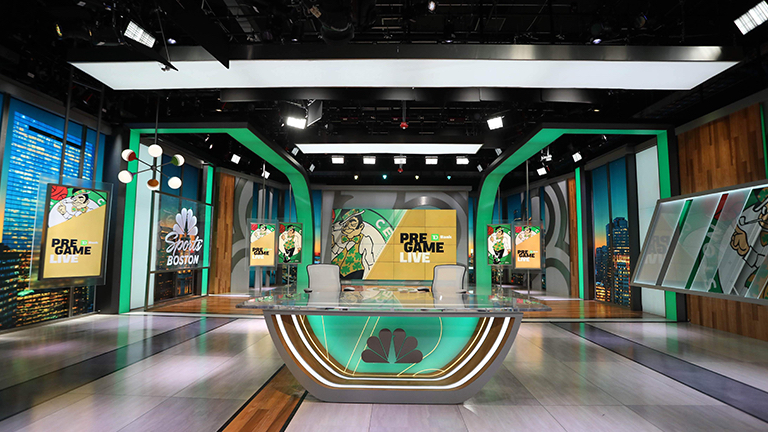
Last week, NBCUniversal Television and Streaming Chairman Mark Lazarus told a conference hosted by the Sports Business Journal that his company has been negotiating streaming rights with teams and leagues to put NBCU's five regional sports networks on Peacock.
If ultimately consummated, that may have repercussions that echo way beyond the seemingly modest boundaries of the deal.

That’s because sports play such a prominent role in why viewers subscribe to TV services, both streaming and linear. RSNs in particular play a prominent role in the value chain that is very different from ESPN
That’s because RSN viewers are hardcore.
They are fans of a particular team. And while they may appreciate a good NBA game of the sort that is often found on ESPN, they will like it much more if, say “their” Boston Celtics are playing in it.
As such, they have been happy to pay whatever it is their MVPD is asking for the ability to watch every single Celtics game. Even if “whatever” is an extra $40 or $50 each month for the “Platinum Plus” tier.
Also read: Peacock Paid Users Have Doubled in 2022 to 18 Million, Jeff Shell Says
The smarter way to stay on top of the streaming and OTT industry. Sign up below.
ESPN fans, on the other hand, are fans of the sport. They likely have a favorite team, but they aren’t fanatics. They’re happy to watch any solid match-up.
Now to be clear, this is not an either/or dichotomy – the vast majority of fans fall into the gray area in between the two extremes.
But in terms of what people are willing to pay each month to watch sports, there is most definitely a line.
What this means in practical terms is that Peacock will likely pick up a lot of subscribers in the areas where it has rights to NBCU’s RSNs. Given that these are high population areas – Northern California, Boston, Chicago and Philadelphia— we’re talking a lot of fans.
Now, what this also does is give Peacock access to a new group of subscribers who are far less likely to churn, and, if they do churn, are likely to come back in time for the new season without Peacock having to spend a dime on re-acquiring them.
It also gives Peacock a bigger audience for its ads, because sports are always going to be ad-supported given that the alternative is listening to the announcers blather on during a lengthy time out or pitching change. (Plus the leagues usually insist on it.) So even though the RSN subscribers may need to sign up for ad-free Peacock, they are still going to see ads.
At a macro level though, the deal provides a window into how sports can, if not save streaming and the television industry, at least provide it with a path to greater profitability.
To wit, it would not be a leap to say the Peacock’s RSNs will create more loyal subscribers than Netflix or Disney’s hit series. Bingeable shows come and go. The Celtics are forever.
It provides Peacock with additional ad revenue and a chance to reach TV’s version of the white Siberian tiger — those viewers, largely upscale and always desirable — who don’t watch any ad-supported TV outside of sports and the occasional major news story. (Russia invades Ukraine major.)
This audience — and we have no idea how big it actually is — should prove very desirable to advertisers as those Celtics games we’ve been using as an example throughout this article are the only places on TV where they can reach them.
Thus those sports CPMs may prove very lucrative. Or not — it depends on how big that ad-free group is, but my hunch is that it is big enough to make paying a lot to reach them important to a sizable group of big-budget advertisers.
Then there’s the flywheel effect.
Peacock can promote all its new original series during the RSN games. (And unlike the NFL, the NBA, NHL and MLB have a lot of games.)
This will help them to reach a new audience, get some crossover viewing and possibly convince subscribers that there’s something on to watch during the offseason, so why not keep the subscription?
These promos may prove particularly useful because watching TV is not an individual activity but rather, a household activity. So even if the Peacock originals are not something the sports fan themselves would want to watch, they may decide they’re just the ticket for someone else in their household and thus keep the subscription going.
RSN rights also make a Peacock subscription non-negotiable, at least during the season.
As the economy tightens and churn increases, “Which services are we not watching and which ones should we cut?” is likely to be a monthly conversation in many households.
If Peacock has someone’s favorite RSN, then cutting Peacock becomes non-negotiable.
One last thing we need to do is say a moment of silence for all those MVPDs and vMVPDs who had previously had exclusive rights to NBCU’s RSNs. They’re going to lose a number of subscribers once they figure out they can watch their favorite RSN on streaming for just $10/month plus all the Peacock they want.
Many may not want to make the switch to Peacock and will want to keep their cable subscriptions going.
But for those who are only keeping their subscription going for the RSN, it’s a deal they will have trouble saying no to.
Alan Wolk is the co-founder and lead analyst for media consultancy TV[R]EV
